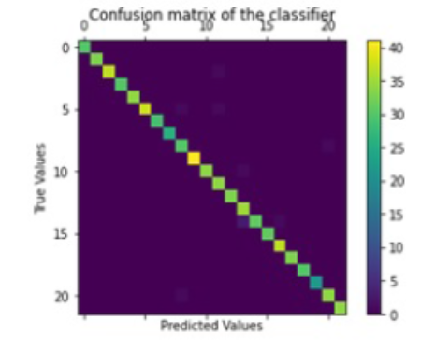


Indian Journal of Science and Technology
DOI: 10.17485/IJST/v16i37.1352
Year: 2023, Volume: 16, Issue: 37, Pages: 3090-3099
Original Article
C Beulah1, Paul Sujni2, R Rajasree3, S Sanjith4*
1Associate Professor, Digital Sciences, Karunya Institute of Technology and Sciences, Coimbatore, Tamil Nadu, India
2Faculty, Computer Information Science, Higher Colleges of Technology, Dubai, UAE
3Research Scholar, Digital Sciences, Karunya Institute of Technology and Sciences, Coimbatore, Tamil Nadu, India
4Assistant Professor, Digital Sciences, Karunya Institute of Technology and Sciences, Coimbatore, Tamil Nadu, India
*Corresponding Author
Email: [email protected]
Received Date:02 June 2023, Accepted Date:30 August 2023, Published Date:03 October 2023
Objective: The goal of the proposed work is to create a smart farming methodology that automates crop suggestions, smart irrigation, disease management using machine learning, and pest management utilising the Internet of Things concepts. Methods: The proposed approach implements smart farming in four different phases. Crop selection is recommended based on the suitability of the soil using XGBoost machine learning algorithm using Kaggle Crop Recommendation dataset. Smart irrigation has been implemented using LM35 soil temperature sensor and DHT22 humidity sensor. Convolutional neural network models were used for automatic crop disease detection. An IoT-based system is proposed for pest management. Findings: This approach uses hybrid strategies to increase agricultural productivity in the best possible circumstances. Ten agricultural fields that cultivate rice and vegetables like tomatoes, lady fingers, and brinjal plants in Southern parts of Tamil Nadu have been used as case studies for the research. Crop selection based on soil type resulted in an increase in crop yield of 62% for tomato crops, 71% for brinjal and 77% for ladies finger. Smart irrigation helped in reducing the consumption of water by 34.38% for rice, 56.17% for brinjal, 60% for ladies finger and 64.45% for tomatoes. Tomato leaf diseases could be automatically identified with an accuracy of 96.24%. Novelty: XGBoost algorithm has been implemented to choose crops based on soil type for the first time with an accuracy of 98.62%. Smart irrigation is implemented with temperature and humidity sensors and pH meter. Convolutional neural network model has been improved using transfer learning techniques and hyperparameter tuning to achieve an accuracy of 96.24%.
Keywords: Smart Farming; Convolutional Neural Networks; Extreme Gradient Boosting; Deep Learning
© 2023 Beulah et al. This is an open-access article distributed under the terms of the Creative Commons Attribution License, which permits unrestricted use, distribution, and reproduction in any medium, provided the original author and source are credited. Published By Indian Society for Education and Environment (iSee)
Subscribe now for latest articles and news.